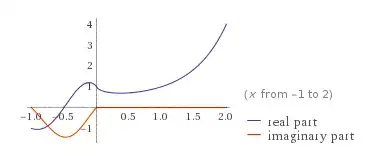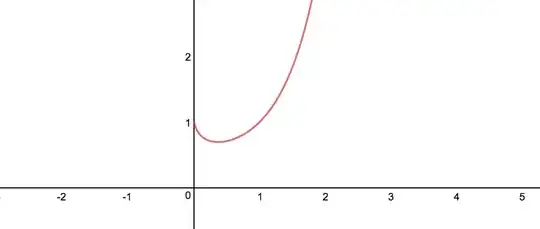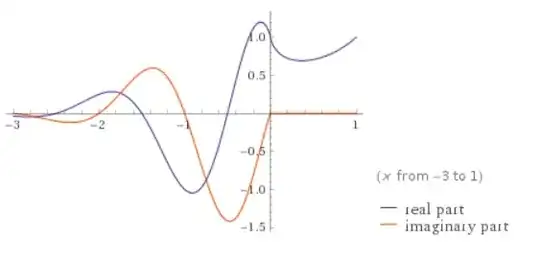I'm a little baffled by the following:
Figure 1
This is the graph of $f(x)=x^x$, with its real parts and its imaginary parts shown, and similarly:
Figure 2
so is this, except here obviously only the real part is shown, or is it? I understand that for the values of $\lbrace{x:x\notin\mathbb Z,x<0\rbrace}$, $f(x)$ will have an imaginary part, as there will be some rather severe negative roots in here. Therefore, if we were only plotting the values of $\lbrace{f(x):f(x)\in\mathbb R\rbrace}$, the graph would have discontinuity everywhere besides the isolated points such that $\lbrace{x:x\in\mathbb Z,x<0\rbrace}$ similar to Firgure 1, so why does the graph in Figure 2 not continue for any values of $x < 0$?
In the following video on Blackpenredpen's channel, he mentions that it is because of the need for continuity that we discard values of $f(x)$ such that $x\leq0$, but why is it that we can do this? If we derive the majority of our mathematical understanding from natural occurrences, the graph of $f(x)=x^x$ wouldn't naturally just start at $x=0$, so why is it that we accept this as the standard graph of this function?
Graph of $y=x^x$ by blackpenredpen
For those of you to whom the video does not snap to the desired time, the bit of the video I'm focusing on is $2:33$.
Any help is appreciated, thank you.


